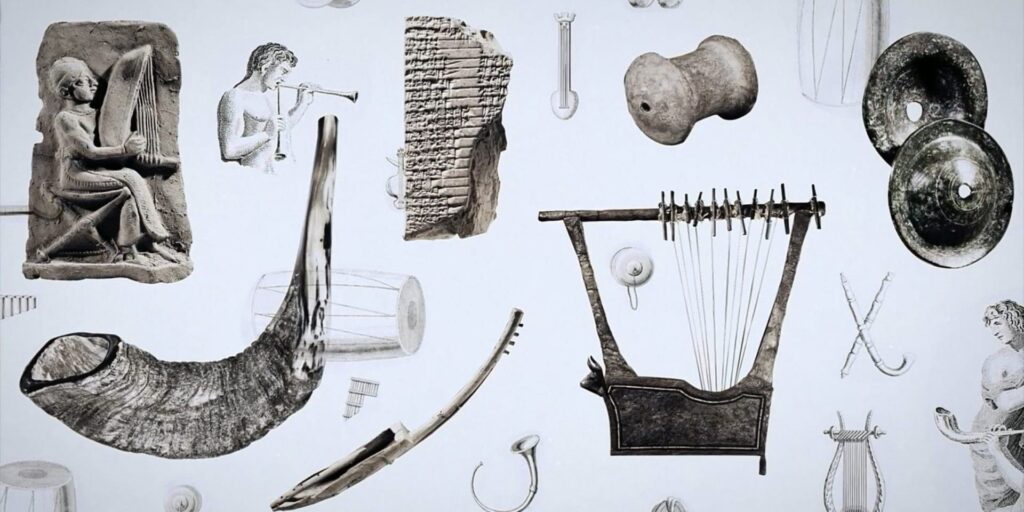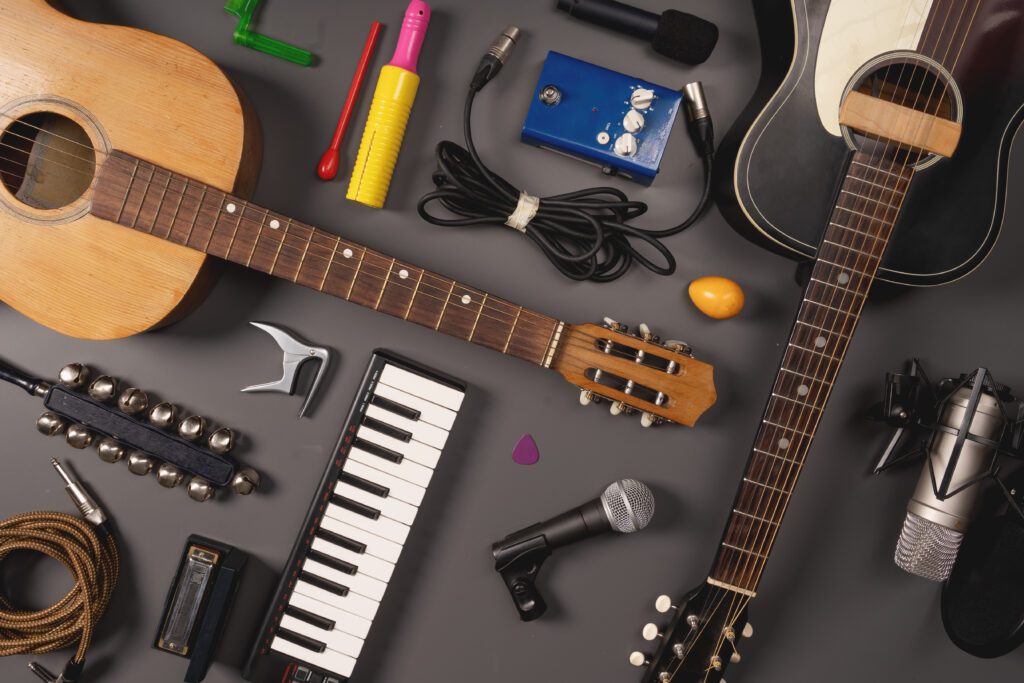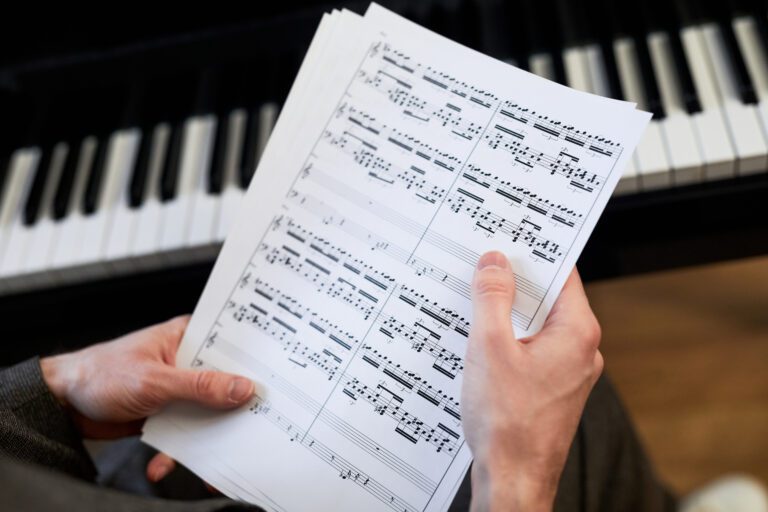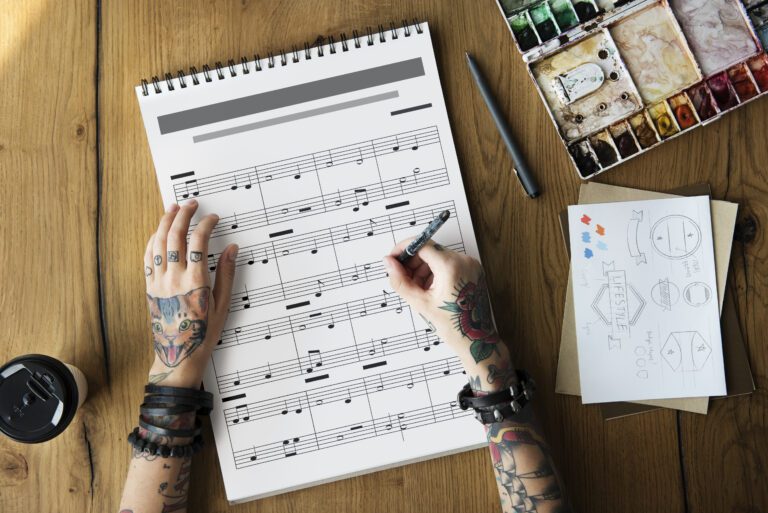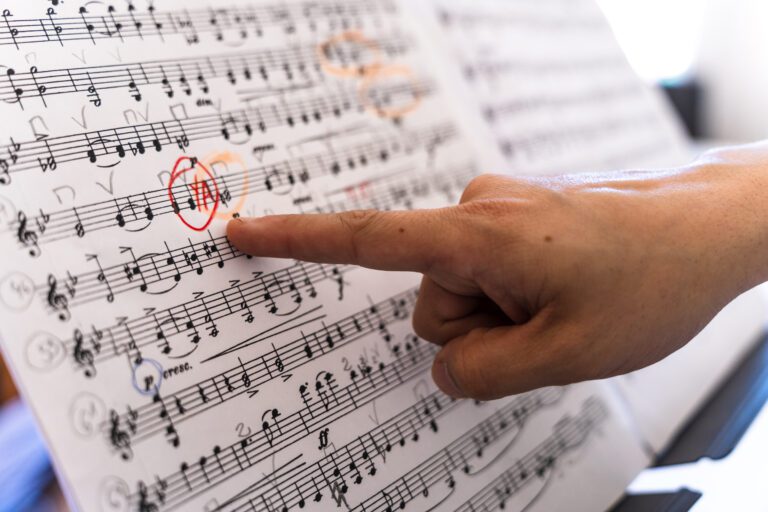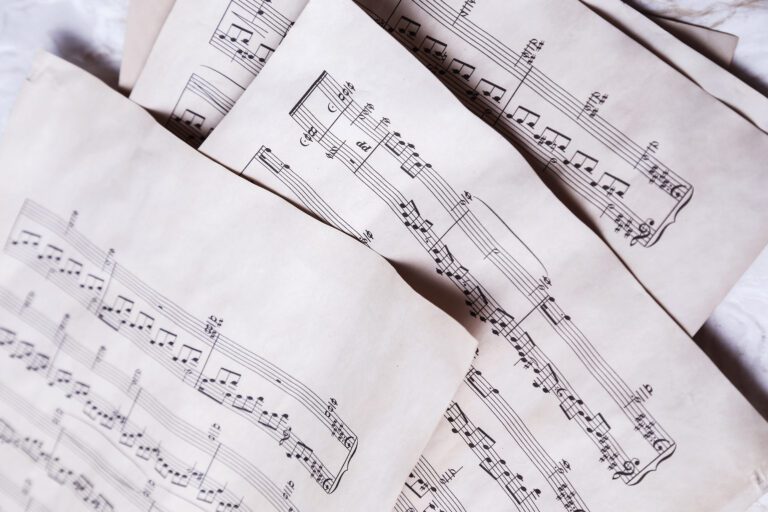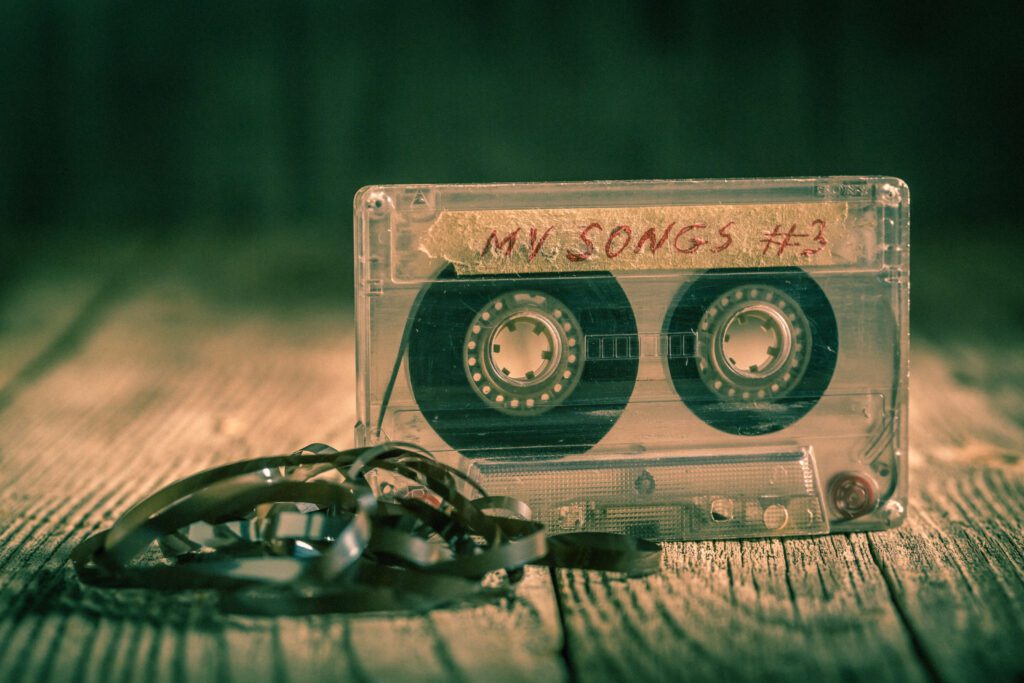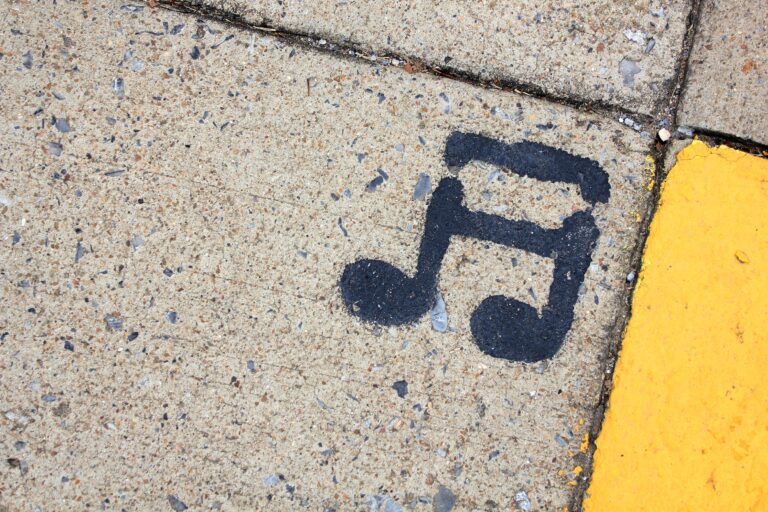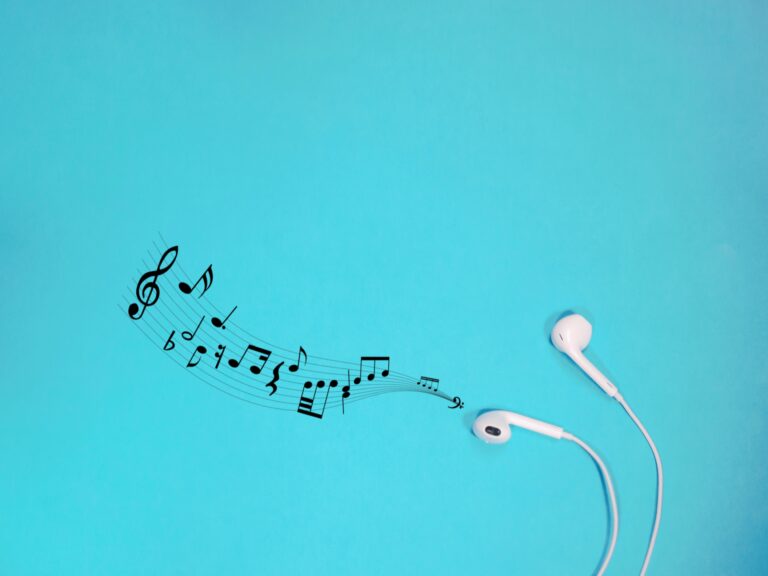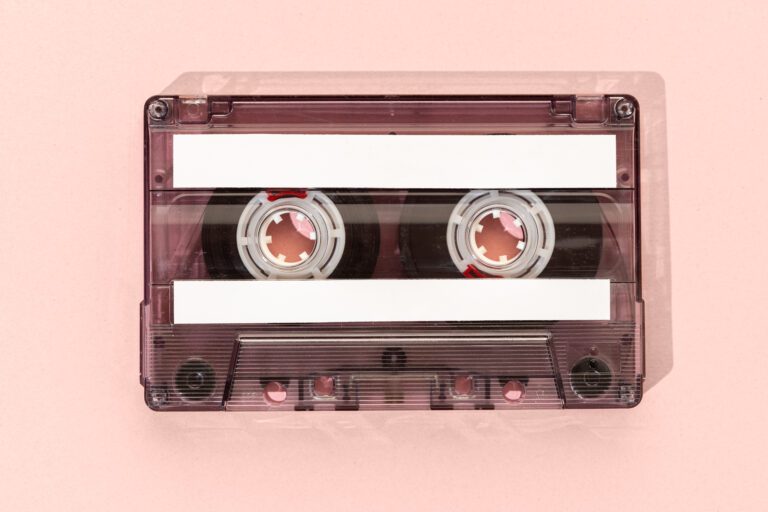
Oldest Musical Instruments in History
The Oldest Musical Instruments Ever Discovered
Before cities rose, before alphabets formed, and before stone monuments stood—music was already alive. It whispered through the winds, echoed in caves, and resonated through bone, stone, and voice. From our earliest ancestors to modern minds, music remains one of humanity’s most powerful forces. The oldest musical instruments in history reveal just how deeply sound was woven into the roots of our civilization.
Why Music Came First
Many researchers agree—music may have emerged before structured language. Rhythm, humming, and vocal calls possibly helped early humans communicate. These sounds likely bonded communities, calmed children, or warned of danger.
The Role of Archaeology in Musical Discovery
Archaeologists have worked tirelessly to unearth musical tools from ancient ruins. They often rely on radiocarbon dating, cave stratigraphy, and contextual clues to confirm instrument use. Even a small bone or hollowed-out tusk can change our understanding of early civilization.
How Music Reflects Human Identity
Every culture, past or present, includes music. That fact alone speaks volumes. Whether through a bamboo flute, a tribal drum, or a lyre, humans have always made music. It has shaped celebrations, rituals, and emotions for tens of thousands of years.
In this blog, we’ll dive deep into the oldest musical instruments in history. We’ll explore how they were made, where they were found, and what they reveal about our prehistoric past.
The Oldest Known Flutes in Human History

Among all prehistoric instruments, ancient flutes remain the oldest discovered so far. These artifacts push music’s origin back more than 40,000 years.
1.1 The Hohle Fels Flute: Humanity’s First Melody Maker
Where It Was Found
The Hohle Fels cave lies in the Swabian Jura region of southern Germany. In 2008, archaeologists unearthed a flute made from a griffon vulture’s wing bone.
How It Was Made
The instrument measures about 8.5 inches long and has five precisely drilled finger holes. Scientists believe these holes were made using stone tools.
What It Proves About Early Music
Radiocarbon dating placed this flute at over 40,000 years old. That makes it one of the oldest musical instruments in history. Researchers confirmed it could produce multiple pitches, likely forming a simple scale.
This flute proves that early Homo sapiens were already crafting tools not just for survival, but for art and expression.
1.2 The Geißenklösterle Flutes: Ivory Songs from the Ice Age
Discovery and Location
Just miles from Hohle Fels lies another cave—Geißenklösterle. Excavations here began in the 1970s, but in the 2000s, two remarkable flutes came to light.
What They’re Made From
One flute came from bird bone; the other from mammoth ivory. Both showed careful craftsmanship. The ivory flute, in particular, required a complex hollowing and bonding process.
Their Cultural Significance
These flutes date between 35,000 and 40,000 years ago. That places them in the Aurignacian period—a time when symbolic behavior flourished.
Their presence suggests that music wasn’t rare or optional—it was embedded in early human life.
1.3 Sound in the Ice Age: Reconstructing the Music
Scientific Experiments
Researchers and musicians have reconstructed these flutes to study their acoustics. The instruments could produce a range of notes, allowing for basic melodies and harmonies.
Musical Possibilities
The tone resembled modern flutes with airy, haunting sounds. Some believe these tunes may have echoed in sacred spaces or guided ritual dances.
These reconstructions help us experience ancient music with modern ears.
Bone Pipes from Divje Babe Cave
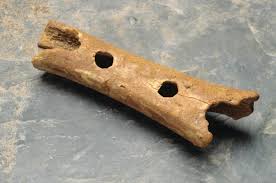
A Controversial Discovery That May Reframe Human Music History
Among the most debated artifacts in archaeology is a curious bone pipe from a Slovenian cave. Known as the Divje Babe flute, this artifact has stirred passionate debate among experts worldwide.
2.1 Unearthing the Mystery: Where Was It Found?
The Slovenian Cave Site
In 1995, archaeologists excavating the Divje Babe cave near Cerkno, Slovenia, found a pierced femur of a juvenile cave bear.
Context of the Discovery
The artifact was embedded in a Middle Paleolithic layer. This layer dated to around 50,000 to 60,000 years ago. That’s before Homo sapiens reached Europe.
2.2 Neanderthal Origins: Did They Make Music Too?
A Revolutionary Hypothesis
Because of its age and location, many experts believe Neanderthals may have crafted this flute. If true, that changes everything.
Evidence of Intentional Crafting
The bone displays at least two clean, rounded holes. Their spacing aligns with modern tonal systems. This suggests a purposeful design.
Opposing Theories
Not all scholars agree. Some argue that animals, especially hyenas, could have bitten through the bone, mimicking holes. However, experiments show the holes’ shapes are difficult to reproduce through biting alone.
2.3 Acoustic Tests and Musical Potential
Playing the Controversial Flute
Researchers built replicas of the Divje Babe flute. They played it successfully, producing stable pitches within known scales.
Musical Implications
If Neanderthals made this, they understood pitch and rhythm. That would mean the oldest musical instruments in history were not just from Homo sapiens.
2.4 The Cultural Weight of This Discovery
This flute could extend musical history by over 10,000 years. It suggests music might predate Homo sapiens. That’s revolutionary.
If confirmed, the Divje Babe bone proves that music is more deeply rooted in the human family than we ever thought.
Prehistoric Percussion | Lithophones
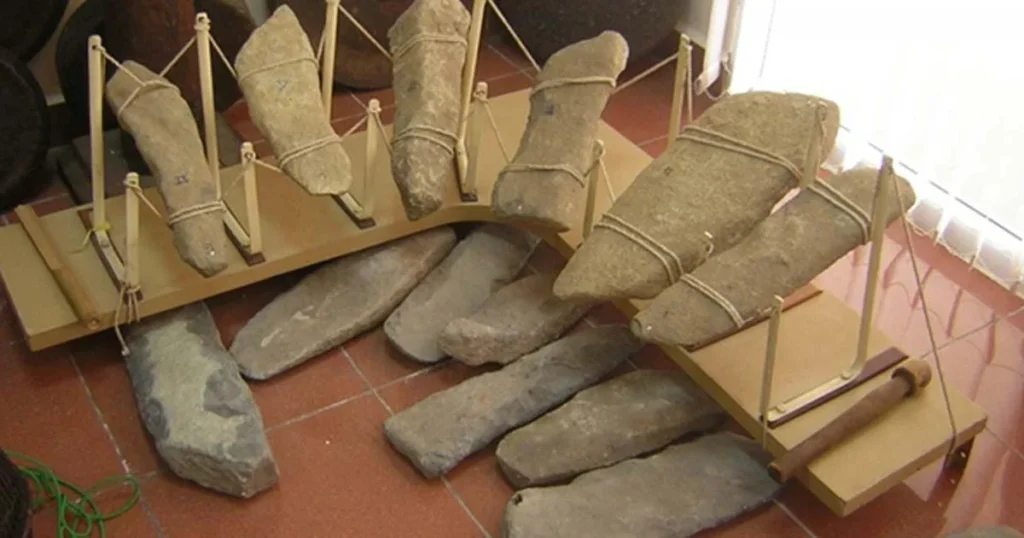
Stones That Sing—A Forgotten Chapter in Musical History
While flutes captured the imagination of the Ice Age, rhythm echoed from stone. Lithophones represent one of the earliest uses of percussion. These natural xylophones existed long before metal or wood instruments.
3.1 What Are Lithophones?
Defining the Instrument
A lithophone is a musical instrument made from stones. These stones emit tones when struck. Some produce notes that resemble tuned bells.
Earliest Appearances
Lithophones appear across ancient Asia, Africa, and Europe. Many of them date back over 12,000 years.
3.2 The Vietnamese Đàn Đá: Echoes from Southeast Asia
Where and When It Was Found
In Vietnam’s Central Highlands, archaeologists discovered multiple stone xylophones, known locally as Đàn Đá. Some are over 2,000 years old.
Musical Function and Design
The stones are arranged in pitch order. Their shapes and lengths determine the tone. Musicians struck them using wooden mallets.
Ongoing Cultural Relevance
The Đàn Đá is still performed in modern Vietnam. Its ancient roots and modern use create a direct link between past and present.
3.3 Paleolithic Lithophones in Europe
France and the Pyrenees
In southern France, caves such as the Marsoulas Cave contain lithophones. Researchers confirmed their use by analyzing micro-wear and impact marks.
Evidence from Acoustic Studies
Acoustic mapping shows that many caves have optimal echo chambers. Lithophones placed in these areas likely enhanced musical experiences.
Why They Matter
These instruments might have been used during ceremonies, rituals, or storytelling. Their placement deep within caves suggests spiritual significance.
3.4 Indian Stone Music: Ancient Raga Stones
Historical Reference and Discovery
In India, scholars refer to ancient ‘Raga stones’, described in early scriptures and temple murals. Though difficult to date, some artifacts trace back 3,000 years.
Material and Sound
These lithophones were carved from granite or sandstone. When struck, they produced deep, meditative tones, ideal for chants and prayer.
Bullroarers and Rhythmic Tools

Instruments of Ritual, Sound, and Signal Across Early Civilizations
Not all prehistoric instruments produced melody. Many made rhythmic or vibrational sounds used in rituals, communication, or spiritual ceremonies. Bullroarers and percussion tools stand among the oldest musical instruments in history that conveyed more than just entertainment.
4.1 The Bullroarer: A Whirling Sound of the Ancients
What It Is and How It Works
A bullroarer is a flat wooden tool attached to a cord. When swung in circles, it produces a loud, humming tone.
How Ancient It Really Is
Archaeologists have discovered bullroarers across continents. Some date as far back as 18,000 years, placing them in the Upper Paleolithic.
Global Discovery Sites
These instruments appear in Australia, Africa, and ancient Europe. Indigenous Australians still use them during rituals and storytelling.
Functions Beyond Music
Bullroarers served ceremonial roles, weather summoning, and long-distance communication. Their low-frequency sound can travel for several kilometers.
4.2 Ritualistic Rattles and Percussive Stones
Bones and Seeds as Sound Makers
Many prehistoric societies used rattles crafted from animal bones or dried seed pods. These were likely shaken during dances or rites.
Symbolic Meaning in Tribal Life
Rattles often represented fertility, protection, or spiritual connection. Their sound was meant to invoke ancestral presence or divine energy.
Materials and Craftsmanship
Early humans used available resources like shells, bones, and gourds. By attaching pebbles or seeds inside, they crafted effective noise makers.
4.3 Clappers and Wooden Idiophones
Primitive Rhythmic Devices
Clappers made from antlers, bones, or wood were used to keep rhythm. They often accompanied vocal chants or percussive dances.
Where They Were Found
In parts of Africa and Europe, archaeologists uncovered pairs of clappers buried in ceremonial sites. Some date back 9,000 years.
Cultural Connections
Clappers were not just musical. They symbolized duality, rhythm, and harmony in life. Even now, similar tools are used in folk music.
Harps and Stringed Instruments
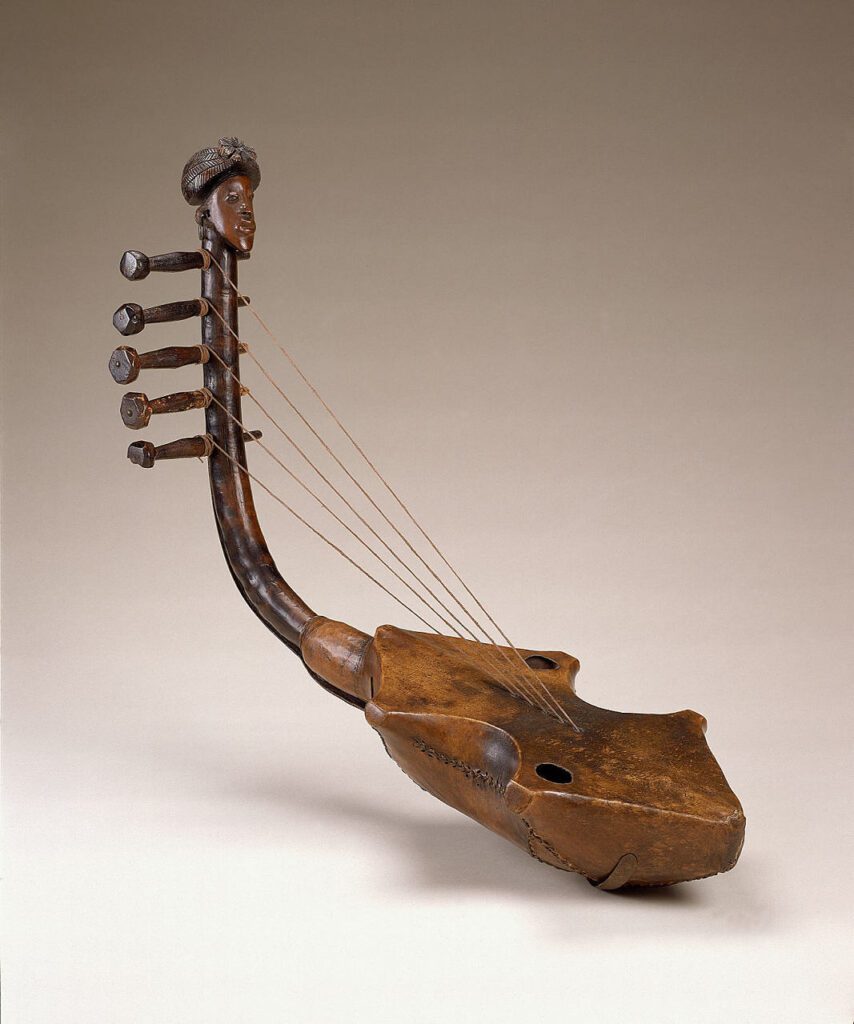
Tracing the Birth of Strings in Ancient Civilizations
While rhythm and wind came first, string instruments soon followed. These instruments introduced harmony and melody into early music. They also marked the beginning of musical complexity in many ancient societies.
5.1 The First Harps in Mesopotamia
Oldest Visual Evidence
Archaeologists uncovered depictions of harps on ancient Sumerian tablets dating back to around 3,000 BCE. These are the earliest string visuals.
The Royal Lyres of Ur
Discovered in the 1920s, the Royal Lyres came from the Royal Tombs of Ur in modern-day Iraq. These instruments date to around 2500 BCE.
Construction and Symbolism
Crafted from gold, silver, and precious wood, these lyres had strings stretched over curved arms. Many had bull-headed motifs symbolizing strength.
Musical Use and Legacy
The lyres were likely played during royal ceremonies or funerals. Today, they stand as iconic examples of the oldest musical instruments in history.
5.2 Ancient Egyptian Harps
Design and Materials
Egyptians used angled harps, often without forepillars. These instruments were made from sycamore wood and animal gut strings.
Depictions in Tombs
Wall paintings from 2500 BCE show harpists performing for pharaohs and gods. The music was sacred and celebratory.
Harp’s Cultural Role
In Egypt, harpists held high social status. Their music bridged the divine and human, used in both joy and mourning.
5.3 String Instruments in South Asia and China
Early Vina in India
Indian scriptures describe the Vina, a plucked string instrument, in texts over 2,000 years old. Some even date its origin earlier.
Zithers in Ancient China
In China, instruments like the guqin have existed for over 3,000 years. These zithers were used for meditation and court rituals.
Global Spread of Strings
Despite distance and culture, every ancient civilization developed a form of string instrument. That speaks to music’s universal nature.
Sound and Ritual in Prehistoric Societies
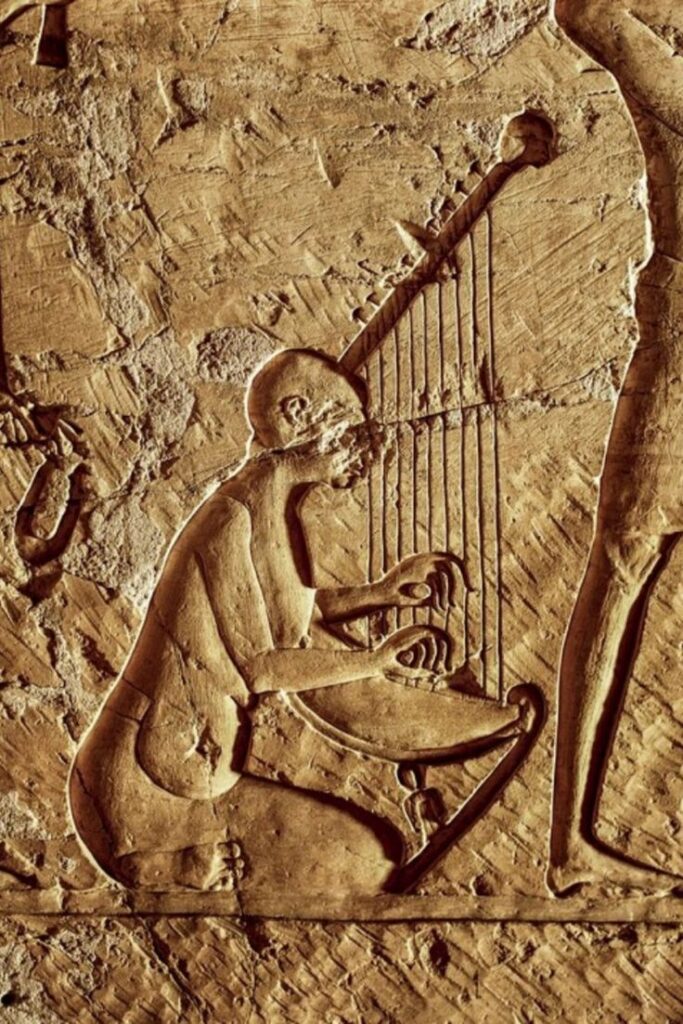
Music as a Tool for Spiritual Connection and Cultural Identity
Long before written language emerged, music shaped ritual and belief systems. Across prehistoric cultures, sound served sacred, symbolic, and emotional purposes. These practices reveal that the oldest musical instruments in history were deeply spiritual in function.
6.1 Music in Caves: Sacred Soundscapes
Acoustics and Spirituality
Prehistoric people didn’t just enter caves for shelter. They chose acoustically resonant chambers to create echoing, immersive soundscapes.
Wall Art and Sound Together
Many cave paintings—especially in Chauvet and Lascaux—exist in areas with strong acoustics. These caves echoed music or chanting during rituals.
Symbolic Connection with Nature
Sound in caves mimicked thunder, wind, and animal calls. That created a spiritual dialogue between humans, the earth, and unseen forces.
6.2 Healing and Trance Ceremonies
Drums and Rhythmic Tools for Healing
Shamans often used percussive rhythms during healing rites. Steady drumming helped induce trance-like states and connect with the spiritual realm.
Voice as a Vehicle for Power
Prehistoric singers likely used repetitive chanting. These vocal patterns were meant to focus energy, drive away illness, or summon ancestral spirits.
Echoes of the Ancestors
People believed that echoes weren’t just sound—they were spirits replying. So, echoing instruments held sacred importance during rituals and offerings.
6.3 Seasonal and Fertility Celebrations
Rites Marking Life Cycles
Music accompanied seasonal changes, births, and harvests. Instruments mimicked nature to honor cycles of rain, sun, and growth.
Dance, Music, and Unity
Rhythmic performances unified communities during large rituals. Bullroarers, drums, clappers, and flutes likely marked steps in these synchronized dance circles.
Cross-Cultural Echoes
Despite geographical isolation, early humans used similar instruments for rituals. That proves how essential sound was to prehistoric cultural identity.
Transforming Utility into Art: Innovation in Prehistoric Sound-Making
Sometimes, musical instruments weren’t made intentionally. Early humans discovered sound in tools first meant for hunting, cooking, or building. These moments of accidental inspiration birthed many of the oldest musical instruments in history.
7.1 The Accidental Flute: Blowing into Bones
From Hunting to Harmony
After cleaning animal bones for food, people noticed that blowing across hollow bones created whistling sounds. Curiosity led to innovation.
Experimentation Sparked Evolution
With repetition, holes were carved intentionally. Gradually, these experimental pipes transformed into deliberate instruments for ceremonies or communication.
Bone Selection for Tone
Longer, denser bones from large animals created deeper sounds. Musicians learned this through practice and cultural knowledge passed across generations.
7.2 Hammerstones and Percussive Play
Work Rhythms Turned Musical
People banging stones to crack nuts or shape tools discovered rhythm. This led to the development of early lithophones and clappers.
Stone-on-Stone Melodies
Some stones resonated melodically. Through striking different sizes, humans created rhythmic structures during labor and rest.
Echoes in Daily Life
Daily activities—chopping wood, grinding grains, striking flint—were naturally rhythmic. These patterns likely inspired some of the first musical performances.
7.3 Bowstrings and the Birth of Harmony
Weapon to Instrument Transition
Early bows used for hunting made a hum when plucked. This inspired musical adaptations like the musical bow or early harp.
Cultural Adaptations Worldwide
Musical bows appeared in Africa, South America, and Asia. Their simplicity allowed portability, experimentation, and emotional expression.
Symbolic Duality
Tools used to hunt and survive could also create beauty and joy. That duality gave music emotional power across cultures.
Ancient Music Beyond Artifacts
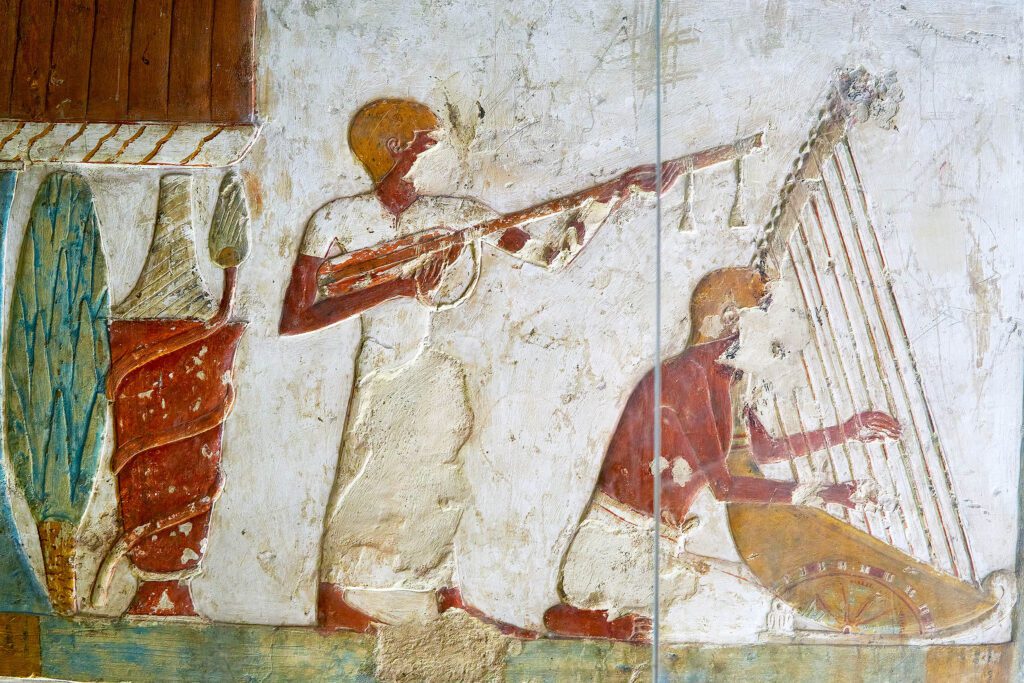
Echoes That Linger in Culture, Oral Tradition, and Modern Music
While artifacts provide physical evidence, ancient music also survives through oral traditions, folk songs, and cultural memory. These unseen legacies connect us to prehistoric creativity and emotional expression.
8.1 Intangible Heritage: Songs Without Instruments
Vocal Traditions Passed Down Generations
Before instruments, people used voice to mimic nature. These chants and melodies were shared orally through generations, preserving prehistoric ideas.
Lullabies and Ritual Chants
Even now, many tribal communities sing lullabies, war cries, or seasonal chants with ancient tonal structures from thousands of years ago.
Similar Patterns Across Cultures
Despite distance, similar pentatonic scales and rhythmic patterns appear across continents. This hints at shared roots among the oldest musical instruments in history.
8.2 Instruments in Folk Culture
Echoes in Modern Tribal Music
Modern-day tribal flutes, lyres, and drums often mirror prehistoric designs. They serve as living links to our early ancestors.
Passed Without Written Notation
Many cultures teach music through imitation. Without notation, they preserve ancient tunes purely through memory, performance, and repetition.
Still Played in Rituals Today
In parts of Africa, Australia, and Asia, bullroarers and bone flutes are still used. Their spiritual power remains deeply respected.
8.3 Ancient Music in Archaeological Acoustics
Recreating Soundscapes of the Past
Modern researchers use 3D printing and reconstructions to play replicas of ancient instruments. These help us hear history in real time.
Sound Mapping in Caves
Scientists also map how sound traveled in ancient caves. Echoes reveal how prehistoric humans used acoustics as a creative tool.
Instruments as Cultural Storytellers
These ancient instruments aren’t just tools—they’re storytellers. Each one narrates a chapter of human imagination, struggle, and celebration.
What These Discoveries Tell Us
Music Was Never an Extra – It Was Essential to Human Life
The study of the oldest musical instruments in history teaches us more than dates or origins. It shows music’s importance in survival, identity, and meaning-making.
9.1 Music Came Before Agriculture or Writing
A Fundamental Human Trait
People created flutes long before they built farms. Music wasn’t invented later—it developed alongside speech and emotional consciousness.
Universal Across Continents
Every ancient culture had some form of music. This points to a universal need for connection through rhythm and sound.
Brain and Emotion Connection
Even prehistoric humans recognized music’s emotional power. Rhythms, melodies, and chants altered moods, signaled danger, or celebrated joy.
9.2 Instruments Show Innovation and Intelligence
Not Just Primitive Tools
These instruments reflect thoughtful craftsmanship. Ancient makers understood acoustics, material resonance, and even musical scales well before modern theory.
Engineering with Emotion
From finger holes to string tuning, every instrument revealed trial, error, and emotional intent. These were expressions of both art and intellect.
Global Inventiveness Without Contact
Despite no contact, humans in different regions invented similar instruments. That highlights shared creativity and problem-solving across early civilizations.
9.3 Music Was Part of Human Evolution
A Tool for Social Bonding
Communal singing and instrument playing bonded tribes. They eased conflict, strengthened group identity, and nurtured empathy among early humans.
Carried Through Migration
As humans migrated, so did their music. Instruments evolved but core patterns stayed. That continuity shaped modern global musical diversity.
Legacy That Lives On
Today’s music still reflects ancient rhythms and tonal structures. From lullabies to anthems, ancient echoes shape modern musical identit
Final Notes on Humanity’s Oldest Sounds
What These Ancient Echoes Teach Us About Ourselves
When we listen to the earliest instruments, we don’t just hear sound. We hear identity, memory, curiosity, and shared human emotion. These tones stretch beyond time. They carry whispers of who we once were—and who we still are.
10.1 Music as a Mirror of Humanity
Instruments Reflect the Human Experience
Every ancient flute or drum shows a desire to express and connect. These artifacts are mirrors reflecting deep emotional intelligence.
Not Just Sound—They Tell Stories
The sounds produced were not random. They told stories about hunting, weather, spirits, birth, love, death, and dreams.
A Language Without Words
Even before language formed, music spoke. It helped our ancestors convey ideas and emotions too complex for grunts or gestures.
10.2 Instruments Show the Evolution of Thought
From Utility to Aesthetic
Bone, stone, and wood were useful tools. But they were also carved and tuned to create something purely aesthetic—music.
Art and Intelligence Intertwined
By shaping instruments, early humans fused creativity with intelligence. That evolution shows how thought and feeling always walked together.
Curiosity Sparked Creativity
Curiosity drove them to experiment with sound. That spark led to the invention of the oldest musical instruments in history.
10.3 A Legacy Carried by Time
From Prehistoric to Present
Despite massive cultural changes, the love for sound persists. Today’s music still echoes prehistoric structures and rhythms.
The Human Need for Sound Remains
We still gather to dance, chant, drum, and sing. This ongoing ritual proves music was never just an invention—it’s a need.
These Sounds Will Never Fade
Though some instruments are buried, their music still plays—in museums, in reconstructions, and in our imagination.
Listening to the Past – Why It Still Matters
From Ancient Echoes to Modern Inspiration
Understanding the oldest musical instruments in history does more than satisfy historical curiosity. It helps us reconnect with timeless truths about humanity.
11.1 Music Unites Across Generations
Though our tools evolve, the purpose of music remains unchanged. It still brings people together and communicates feelings words cannot describe.
11.2 Every Note Is a Bridge to the Past
When we recreate ancient flutes or beat reconstructed drums, we don’t just make music—we reach across millennia to touch our roots.
11.3 Preserving Prehistoric Music Is Preserving Ourselves
By honoring ancient sound, we honor our ancestors’ intelligence and soul. Their echoes still shape our voices, songs, and cultures.
Let the past inspire your present. At The Mystic Keys, we believe music is not just learned—it’s remembered. Whether you’re exploring ancient tones or composing modern melodies, your journey is part of a timeless tradition.
📌 Explore our global music programs here.
🔗 Follow us on social media for more musical discoveries and cultural deep-dives.


